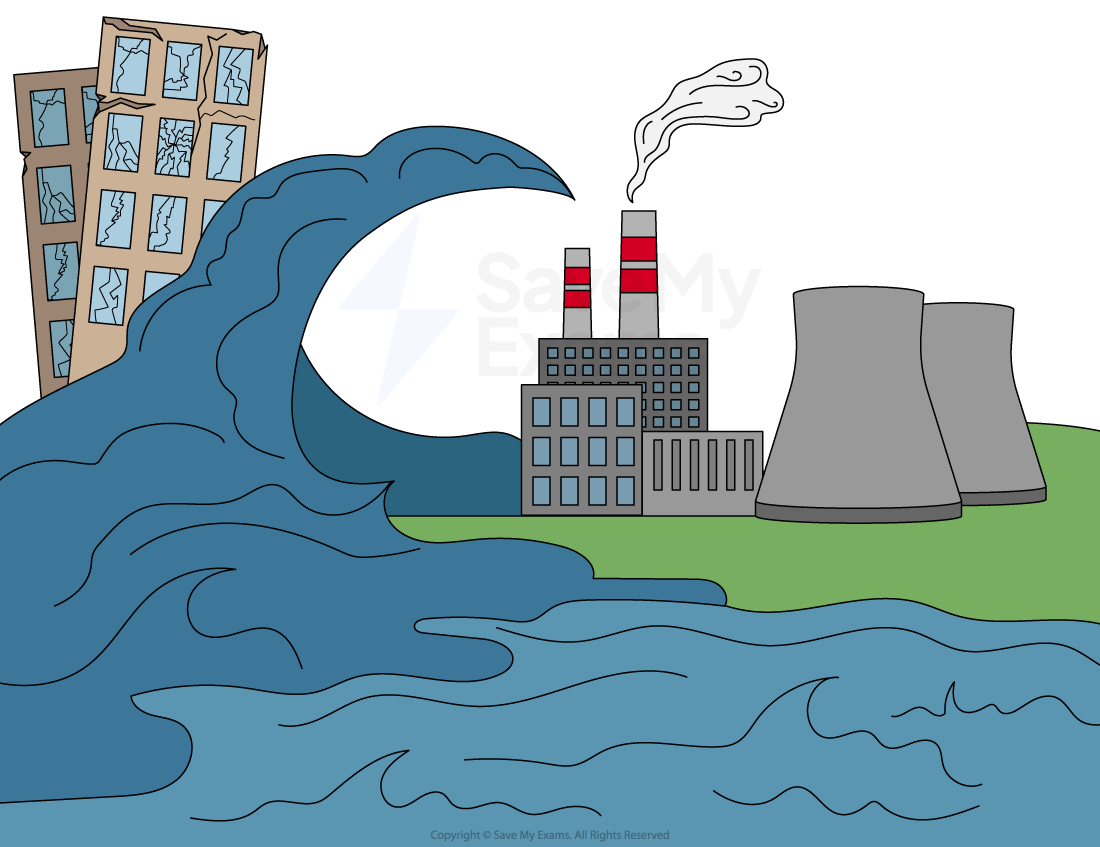Syllabus Edition
First teaching 2025
First exams 2027
Causes & Consequences of Recession (Cambridge (CIE) IGCSE Economics): Revision Note
Exam code: 0455 & 0987
Causes of recessions
A recession is a period of at least six months (2 quarters) of economic decline which causes a decrease in the real gross domestic product (rGDP)
It can be caused by:
A fall in any of the factors that influence total demand (consumption, investment, government spending, net exports). These are demand-side factors
A decrease in the quantity of resources (supply-side factor)
A decrease in the quality of resources (supply-side factor)
1. Decrease in total demand (demand-side recession)
A fall in total demand is caused by a fall in Consumption (C), Investment (I), Government spending (G), or Net exports (X–M)
Some examples of what may cause this include:
Higher interest rates reduce borrowing and spending
Falling consumer confidence leads to less household consumption
Exports fall due to a global slowdown or stronger exchange rate
A demand-side recession leads to lower output and rising unemployment
2. Decrease in the quantity of resources (supply-side)
This is caused by a reduction in the available factors of production
Some examples of what may cause this include:
Emigration reduces labour supply
Natural disasters destroy productive land or capital
Conflict or political instability disrupts production
A reduction in the quantity of resources reduces the ability of the economy to produce goods and services
3. Decrease in the quality of resources (supply-side)
This occurs when there is a lower productivity or efficiency in the use of existing resources
Some examples of what may cause this include:
Skills shortages due to underinvestment in education and training
An ageing or unhealthy population reduces workforce effectiveness
The poor maintenance of infrastructure slows down production
A reduction on the quality of the factors of production causes long-term declines in productive capacity
The economic decline (recession) caused by supply-side interruptions can be illustrated using a production possibility curve (PPC)

Diagram explanation
Recession (economic decline) occurs when there is any impact on an economy that reduces the quantity or quality of the available factors of production as depicted by the movement A
E.g. The Japanese tsunami of 2011 devastated the production possibilities of Japan for many years. It shifted their PPC inwards, causing economic decline
Case Study
The 2011 Japanese Tsunami – A Supply-Side Recession
Context
On 11 March 2011, a powerful magnitude 9.0 earthquake struck off the north-east coast of Japan, triggering a massive tsunami. The disaster caused widespread destruction in the Tōhoku region and led to a nuclear accident at the Fukushima Daiichi power plant. Over 15,000 people lost their lives, with many more injured or displaced.

Impact on the quantity of factors of production
Labour – Thousands of workers were killed or injured, reducing the available workforce
Capital – Factories, machinery, transport links, and housing were destroyed, removing productive assets from the economy
Land – Large areas of farmland and coastal industrial zones were flooded or contaminated, reducing usable land for agriculture
Energy supply – The Fukushima disaster forced the closure of nuclear reactors, cutting Japan’s electricity generation capacity
Impact on the quality of factors of production
Labour skills – Skilled workers in specialised industries were lost or could not work, reducing overall productivity
Capital quality – Damaged infrastructure and outdated replacements reduced efficiency in production
Environmental damage – Contamination from the nuclear accident made some land unusable for decades, permanently reducing the quality of that resource
Infrastructure reliability – Disruptions to transport, power, and communications systems reduced the efficiency of economic activity
Outcome for the economy
Japan’s GDP contracted in 2011 as production fell sharply
Major industries such as car manufacturing and electronics experienced significant delays because of damage to suppliers and parts shortages
Recovery required substantial reconstruction spending, but the short-term effect was a supply-side recession, with reduced productive capacity rather than just falling demand
The disaster highlighted Japan’s vulnerability to natural disasters and its heavy reliance on nuclear energy
Consequences of recessions
A recession affects different economic agents in distinct ways, but the main connection is that falling output and incomes reduce spending power, confidence, and investment
Impact on consumers and workers
Consumers | Workers |
|---|---|
|
|
|
|
|
|
|
|
|
|
|
|
|
|
Impact on firms and governments
Firms | Governments |
|---|---|
|
|
|
|
|
|
|
|
|
|
|
|
|
|
Examiner Tips and Tricks
When answering 'analyse' or 'discuss' questions, show cause-and-effect links between the groups. For example: Falling consumer demand → lower firm revenues → job cuts → reduced tax revenue → higher government borrowing. This shows the full chain of analysis and strengthens your response

Unlock more, it's free!
Did this page help you?